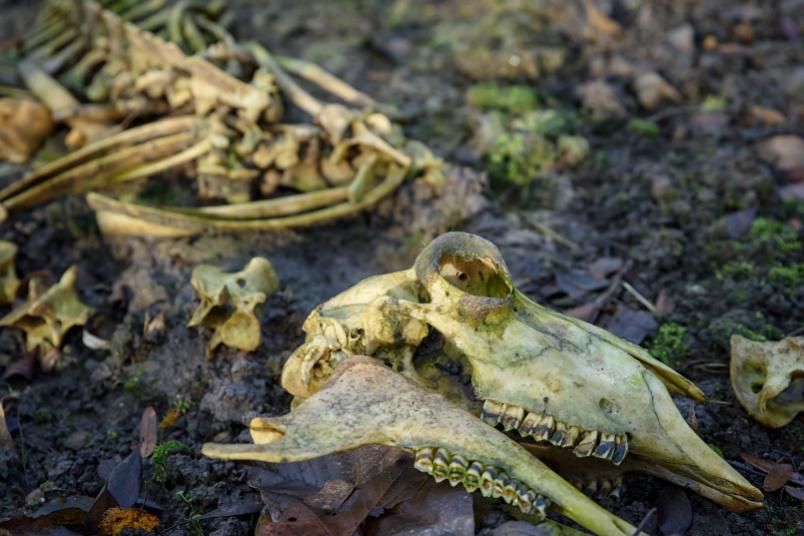
Biology Insects help determine time of death
In order to solve a murder, investigators must know the time of death of the corpse. Insects can help to determine it. In Europe, however, the relevant knowledge has been so far lacking.
Bochum-based researcher Dr. Ersin Karapazarlioglu studied the extent to which decomposition processes differ on the surface and underground. For this purpose, he constructed a special observation grave and compared how quickly an animal carcass decomposes in this grave and on the earth’s surface and which insects are involved in the decomposition processes. The findings provide interesting information for forensic entomology – a field that uses insects to determine the time of death of a corpse. But this can only be done precisely if the impact of different environmental conditions is taken into account. As part of Professor Wolfang Kirchner’s team at Ruhr-Universität Bochum (RUB), Karapazarlioglu is therefore currently examining in what way the seasons affect the decomposition process. The RUB science magazine Rubin reports on his study.
Two methods to determine time of death
Certain species of flies lay their eggs in the tissue of a corpse as early as one to two hours after death. A few days later, maggots hatch and grow in size with each passing day. If a maggot at a certain stage of development is found at a crime scene, investigators can deduce how many days old it is and, consequently, when the eggs were laid – which then also corresponds approximately to the time of death.
This method works for about a month; then, the maggots will have turned into flies, and another method must be used. This is where species become helpful that don’t arrive at the scene of the crime quite as quickly as the flies, such as various beetles that only appear at a later stage of decomposition. The presence of certain species at the crime scene helps investigators to estimate how many weeks or months ago the death occurred.
Established in the USA, lack of data in Europe
Forensic entomology is firmly established in the USA, but is still in its infancy in Europe. The knowledge from the USA can’t be simply transferred to Europe, because there are different insect species in different geographical regions and their development depends on many environmental factors.
At the RUB Faculty of Biology and Biotechnology, Ersin Karapazarlioglu is currently researching which insect species in Germany are involved in the decomposition process throughout the seasons – and whether it makes a difference how deep a body is buried in the ground. “After a murder, bodies are often buried to cover up the traces of the crime, but not very deeply,” explains the former police detective. Therefore, the decomposition process may be different than deep underground, but it has hardly been investigated up to now.
A DIY observation grave
To study the effects of burial on the surface, Ersin Karapazarlioglu has constructed a special observation grave. It is closed on one side with a plexiglass pane so that its inside is visible. In addition, the researcher has attached devices in eight places to take samples of the soil and the organisms it contains. A sheep has been buried in the grave for several months. Plus, Karapazarlioglu uses another sheep for comparison, not burying it, but exposing it to decomposition and insect infestation on the surface. Every one to two days, he takes samples from both carcasses and compares the insect compositions.
“The results show that burying the body affects the decomposition process and insect colonisation,” concludes the researcher. “On a cadaver exposed to decomposition and insect colonisation on the surface, we found different insect species than on the buried cadaver.” The number of colonising insects was significantly greater at the surface than at depth. Moreover, degradation processes that took 180 days at depth took only ten days at the surface.